My fears about us having nothing in common vanished almost the moment I walked through Colin’s door. Several women were working on a bike in the corner. One came and introduced herself to me as the business partner of my friend Sean: they run the very cool community business Fork & Frame together. And the beer Daniel and I brought–an apology to Colin for having to reschedule to a Friday evening–made us other friends in the space instantly. And then there was Colin himself.
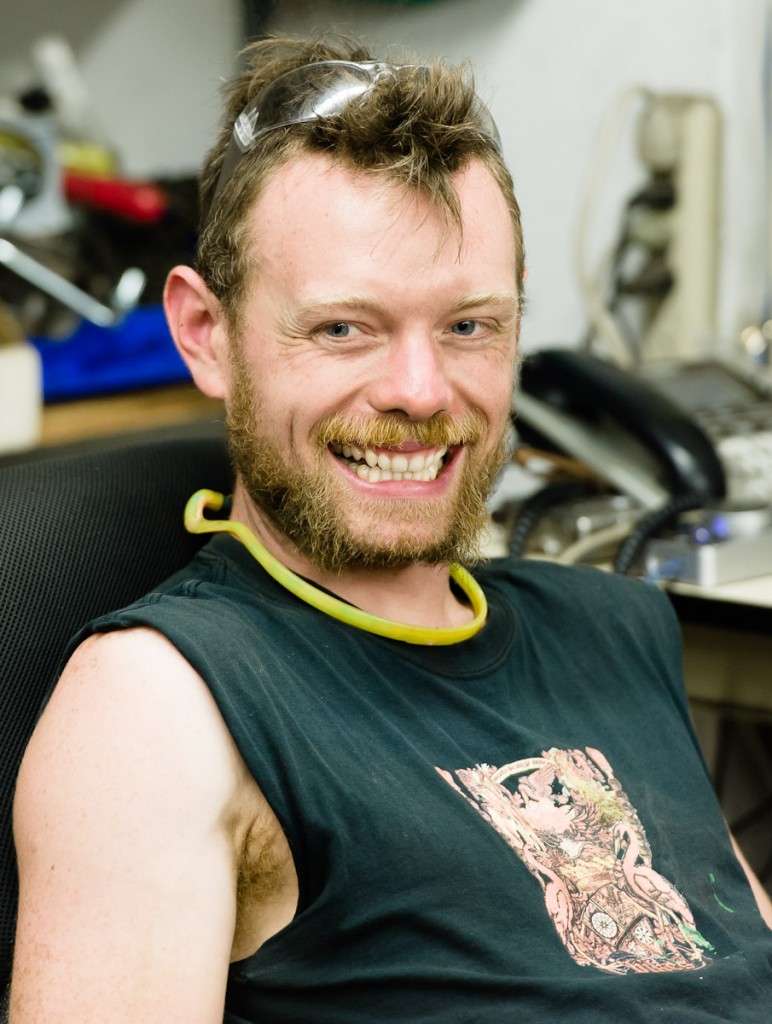
Kind. Welcoming. Generous. Warm. Mischevious. Some of my favorite human adjectives. We set down the beer, told him our story, and he asked if we’d like to start with a tour. We did.
The Space Tour: A Whole Lot of Cool
Colin: Ok. First of all, I share this space with two other people. And so there’s going to be a variety of things going on. Some of them are my projects, some of them are their projects. We work together to some extent. We share resources and tools and stuff. And sometimes we share the work on projects but mostly we do our own projects. I work primarily on bicycles and bicycle-related stuff. One of the other guys does as well. And then the third guy does more motorized, works on mopeds a lot, some motorcycles, and bigger stuff too.
Lori: Oh, cool.
Colin: And then we all do various metalworking. Whatever kind of work comes through the door, welding, and machining.
So, we’ll start here at the door, which has. Here is my great, great grandfather’s bicycle shop in New York City.
Lori: Ah! Oh my God, I love that! That’s outstanding that you have that history in your family. Wow.
Colin: This is my grandfather’s grandfather. My grandfather sent me this picture.
Lori: And that’s in, you said, New York City?
Colin: Yeah. So. This is the bicycle repair corner where we have the standard bicycle shop tools. And we do repair. In the course of working on bicycles frames and doing whatever welding or customization we do, we also do, kind of normal repair work.
Here’s my extra heavy duty repair stand. It’s bolted to the ceiling. This is where I stand when there’s an earthquake.
[Lori laughs]
In the stand right now is a bike for this guy Adam. This is a kit you can buy that turns the rear-end of a bike into a trike. I just made these channels here that it slides into. Because normally they’re just kind of supposed to bolt on and the clamp up there doesn’t actually work that well, so this is the deluxe version. It slides in like that.
Lori: Cool.
Colin: Yeah. He’s using a five-speed hub. It’s got a planetary gear system inside. So while it has one gear on the outside it actually has five different speeds to choose from.
Lori: One of the most fun biking experiences I ever had was a teenager. I drove across country to Missouri with my best friend and we stayed for three days at her grandmother’s retirement community and they had a whole bunch of these.
Colin: Really? Like old Schwin cruisers?
Lori: With the double.
Colin: Oh, with trikes!
Lori: Yeah, trikes. And we, like, cruised around [Colin laughs] for three solid days and thought we were so cool. We had devo glasses on! It was a very fun biking experience.
Colin: Yeah, they’re cool. This guy, he really has one project after another. When I’m done with this he’ll bring in something else crazy. And I think that he just really likes bikes, and gets all these good ideas, and he’s like “Can you do this for me?” and I’m like “Yeah, sure.” And then he makes it and, I don’t know, gives it to a kid or something. He’s like supplying all the neighborhood kids with bikes basically.
Lori: Oh, cool!
Colin: It’s pretty cool so.
Lori: Bike repair area.
Colin: Yeah. Over here we have the oxygen and acetylene tanks so that’s for using the torch, gas torch used for braising, which is attaching metal parts with brass or silver.
Lori: Fun. I’m always jealous of people who get to use fire [Colin laughs] as part of their jobs.
Colin: This is a frame jig. It’s actually used for building bicycles frames from scratch. It’s upside down right now, but the columns come in and hold the tubes together and it gets welded.
Lori: Very cool. I’m going to grab my own camera. It’s important to have some crappy photography along with the good photography. It’s that fire. Those torches. I’m taking a picture of that! [Colin laughs]
Colin: Is it worth it to light it? To show how the torch works.
Lori: Only if you want to.
Colin: I don’t want to bother. [Lori laughs]
Lori: Ooo [pointing at giant wrenches]. Very cool.
Colin: Giant wrenches, which we obviously don’t use on bikes. [Colin laughs]
Lori: But they’re cool anyway. What do you use the giant wrench for? A semitruck or something?
Colin: Yeah, actually a whole bunch of the tools in here came from my shop mate, Michael. His dad was a diesel truck mechanic.
Lori: Ah.
Colin: So we got a whole bunch of oversized stuff from him. We’ve accumulated a bunch more over time. Like the gigantic calipers here. [He laughs]
Lori: Very cool! How long have you been in this space?
Colin: We have been in the building for 5 or 6 years but we were originally in the space right next door, which only goes back halfway. So we expanded about 2½ or 2 years ago.
Lori: Nice. Anything else you want to show me? Whoa. Look how organized your metal is!
Colin: Yeah. There’s so much stuff in here. I love this place. I spend, I spend all my time here, so I think it’s the most interesting place in the world. This is our main work table with two different welders underneath that do different styles of welding. And power tools we use on a regular basis. Drills.
[Someone comes in and asks Colin a question. They chat for a moment.]
Um, cutting tools. We have our nice horizontal band saw here that you can lay down your piece of metal in there and turn it on [loud noise as he turns it on] and set how fast it goes in the cylendar there.
And you can walk away as it cuts the piece of metal and turns itself off at the bottom. Very nice.
All the metal organizied in the bins. Since I built this there are more of some things than before, so it starts spilling out.
[Another loud noise] That’s the air compressor.
Our other work table here which we found for, got a really good deal on. That one is just a sheet of old steel. So it’s, you know, it’s flat. It’s a flat table, but it’s not super-duper precisely flat. This [other table] is a piece—you can see the lines on it—it’s been ground smooth by a giant machine. So the whole surface is perfectly flat.
Lori: Wow.
Colin: So you can use it to align things. And this is actually, this table was the frame alignment table for Raleigh, when they were headquartered in Kent, a bicycle company.
Lori: Ah.
Colin: And it’s now passed through multiple hands and came to ours.
Lori: We just had, our friends Nils and Grant, made us a big round table for our coworking space.
Colin: Cool.
Lori: And they called it a 500-year table. [Colin laughs] Because it’s about this thick [5+-inches] piece of wood. You could sand it every 10 years and there would still be a table there after 500 years. Awesome!
Colin: Sand all the scuffs and scratches out?
Lori: Yeah.
[Someone comes in and asks Colin if one of his shop mates has a particular tool. They chat for a minute and he departs.]
Colin: So this table is mostly covered in moped parts right now. That’s Michael, aka Nas.
Lori: Very cool.
Colin: So that’s compressed gas for the welder. Tool box full of tools. Every drawer is full of goodies.
We have our regular drill press and our big, fancy milling machine. Which is a lot like a drill press, except that it also has the cross-sliding tables so you can actually cut slots and things. We also have the digital read out here which measures out to two one-thousandths of an inch.
Lori: Cool.
Colin: So that’s how you cut precisely cut things.
Lori: It looks like the panel in the Back to the Future car. [Colin laughs]
Colin: We have a vice on there for holding things. This is a rotary table so you can make really precise round things. Like this, for instance. I made a bending die. A bending tool. So in order to make this I put a—let me show you here—a bit like this, like that, in there. And I had this guy molded over here. And I was able to have that spinning, drive it in along here, and at that point you crank this thing.
Lori: And bend it! Ooo.
Colin: And cut out that slot.
Lori: [to Daniel] Wouldn’t your brother just die to have this space? [Colin laughs]
Daniel: Yes.
Lori: His brother has more tools than any human being I’ve ever met.
Daniel: He lives in Lubbock, Texas and keeps building more and more sheds in his backyard. [Colin laughs]
Colin: Well, that’s just handy. [Colin laughs]
Yeah, space is at a premium here. We keep having to clean and try to fit a little more stuff in because there are three of us splitting the rent but, even so, every square foot is worth money.
Daniel: That’s right.
Colin: You can see, we’re like packing stuff into the ceilings here. Bike frames, wheels, all the long pieces of metal up there.
So, as far as precision machine work, the two main tools are the Bridgeport and the metal lathe here. I don’t know if you’re familiar with a wood lathe.
Lori: Yeah.
Colin: This is like a wood lathe, but again, everything is very precise. It doesn’t have a fancy digital readout like that one, but all the dials read off in thousands of an inch increments. [He turns it on and starts to shout over the noise.] So you’ve got something in there, that’s the cutting tool there, for cutting steel. Set your gage. It will drive itself along. The traditional use for these [he shuts the machine off] back before there was a bunch of standardization around mechanical things was that you can make your own screws with this. You can cut threads. Make your own bolts. Yeah.
Lori: Wow.
Colin: Yeah, this is a nice tool. We got this recently to replace one we had that was a little smaller.
Me and Michael and Garth, we’re all 6-foot tall or so, and so when this thing sits on the ground, we’re all going like this [bending over] to try to use it. [We laugh.] So we got these. These are actually scraps from a place in the building that has a really large flame cutter. And so who knows why they had those. At some point they were probably cut outs from something, huge flanges, like a big donut of metal and that’s what dropped out of the middle.
Lori: Yeah. It was the leftovers.
Colin: So we used those to lift our stand up.
Daniel: Yeah, I empathize with the six foot.
Lori: Yeah [he does]. [Colin laughs]
Colin: And then we’ve got—it’s hard to tell—this is another one of those. A metal lathe. It’s got a bunch of junk piled on it. It’s taken apart. But this is another nice old one. This is like a 60s-era really nice American-made machine tool, and it just needs some refurbishing, which is a project that we’re going to get around to sometime. Most of our, a lot of our tools are old, you know.
Lori: Yeah.
Colin: But really nicely made.
Lori: [pointing at a machine, all the handles shiny from use] That’s just a beautiful thing!
Colin: That’s from the 60s. I think both the lathe and the Bridgeport are from the late 70s.
Lori: Good stuff was built in the 70s. I was built in the 70s. [Colin laughs]
Colin: There’s tons of stuff in here. I could keep showing you things but that’s the main idea that’s going on.
Lori: Awesome.
Colin: The backroom area’s mostly storage for projects. We all have a whole bunch of different stuff in progress.
Lori: So can we sit and I can ask you some questions?
Colin: Do you want to sit outside where it’s nice?
Lori: Sure, let’s do that. [to Colin]
[Loudly to Daniel who had wandered off to take photos] Babe, we’re going to be outside. And if you come outside, will you bring the beer?
The Interview: Dangerous, Fun, Disgusting, and Awesome
Lori: How did this come to be a work space?
Colin: Five or six years ago, me and three friends decided we just wanted to share some shop space and get all our tools together in one place. Because, at the time, we were all interested in metal working but not really all that proficient at it. And so we found the space next door, which is less than half this size. And there were four of us splitting the rent, so it was just super easy to afford and it was just kind of a hobby to be in there. That was fun. And then we just kept accumulating more tools, and making more stuff, and then getting word-of-mouth jobs. And over time it became a full-time gig. Well, actually, people came and went from the original group. So Michael and I are the only ones from that original group of four. And we added my friend Garth, who worked at a bicycle shop. And then also Brad—who’s been walking in and out—he pays a little bit in rent to be able to come here and use the tools. He’s not here all the time: me, Garth, and Michael are here full time.
Lori: What else happens in this building?
Colin: Downstairs there are two shops that do mostly blacksmith work, with a forge. Hot work. Making ornate railings, artwork. The Chuck, in the hole, does a variety of metal work, mostly furniture, and there’s a big wood shop that does mostly furniture. A guy who makes custom acquariums. This guy, right next door, our old space, makes artwork, a lot of lamps. And then upstairs is mostly lighter art stuff: painters, sculptors, photography.
Lori: Where’s the music coming from?
Colin: That’s our next door neighbor.
Lori: The lamp maker? [Lori laughs] Nice.
Colin: Yes. We have competing stereos.
Lori: You described this during the tour but I want to make sure that we get it on tape. What work is done in this space?
Colin: In this space, Garth and I primarily work on custom bicycles. We do custom bicycle frames, parts, accessories: everything from custom frames to big trailers to frame repair for broken frames to this kind of random stuff, like turning a bike into a trike, or making a pedicab, or. I just finished—it’s in powder coat right now—I finished a bike that has a smaller front wheel and a big cargo platform on the front. Then it has an additional chain that goes up to the front and runs through a little gear box, and has different attachments that you can put on there for, like you can put a blender on there, a big circle so kids can do spin art, and all kinds of weird attachments like that.
The other aspect is my friend Michael who shares the space. He works on a lot of mopeds and motorcycles. So we’ve got this weird cross over. We’re two-wheeled transportation devices. Mopeds are kind of this weird middle ground between bicycles and motorcycles anyway. So it’s interesting, the cross over there. We run into using similar parts for things and learning from each other. Most mopeds are like a crappy 70s-era bicycle with a motor strapped on.
[We laugh together]
But now, because my shop mate here is probably the primary modifier of moped parts in Seattle, I see all kinds of crazy stuff come through. People taking these old engines and putting all kinds of new equipment on them. Mopeds that were supposed to last, I don’t know, 10 years, and go 30 miles an hour are now lasting 40 years and they’re going, like, 60 or something!
[Lori laughs]
Horribly dangerous. It’s fun.
Lori: What’s one of your favorite stories from the space or most fun memories from the space? [pause] Um, that you would want to share?
[We both laugh]
Colin: Sure. Ah. I love almost every day here. But we do a big building-wide open house every December that’s really fun because all. A lot of times, throughout the year, people are here, more or less. But on that night everyone’s here. Everyone’s shop is open. We’ve got, like, a thousand-plus people coming through to check stuff out. Last year we had a really good turnout. It felt like more attention for our shop than usual for just, entertaining people, showing people the tools, projects and stuff. At one point Garth, in order to demonstrate how a slitting saw works—basically a circular saw blade about that big and a precision tool—he clamped a big piece of salami that we had in here and started cutting off slices. [Lori laughs] I mean, just like spraying meat on the ceiling. It was disgusting and awesome.
Lori: Nice! Yeah. I was thinking as you were showing me that big old tool what a great place to like, bring kids. [Colin laughs]
Colin: Yeah, as long as they don’t touch!
Lori: At least to get them interested in the craft. Using those old tools.
Colin: Yeah. Well, these kids from across the street come in want to play with the bikes. Always want to play with everything. They come in. Start grabbing tools. And we have to be “That’s dangerous! Don’t touch that!” [We both laugh.]
Lori: Yeah. I suppose there’s a certain age, better than kids of all ages.
Colin: Yeah.
Lori: Here’s kind of a woo-woo one. What does this space give you as an individual or group or community?
[Colin pauses and thinks for a long time. His eyes get shiny and for just a fraction of a second I wonder if this tough-looking metal maker is going to cry. He doesn’t.]
Colin: I like that you’re interviewing me as someone who is, like–for this project of people who have special spaces or are doing creative stuff with their spaces. Because I am, I am in love with this space. I come here every day. I wake up in the morning and every day I’m excited to come to work. You know. I jump out of bed to come here.
Lori: Yeah. [I do know]
Colin: You know, its. I get great satisfaction to be here, creating stuff. And I like the social interaction with the people I share the shop with. It’s great when we’re all here together. And even when we’re all working on different stuff. Just talking about things, bouncing ideas off each other. I like the social interaction I get with the customers. People are always coming to me with interesting projects. And, ah, yeah. This is like [another pause] the most satisfying thing in my life. The most exciting thing.
Lori: Yeah.
Colin: I want to be here every day. [He laughs]
Lori: I feel the same way about. Well, I’ve been working from home now for about 5 years. Worked at Microsoft for many years: a curriculum designer, designed courses, elearning, books, and stuff. But I’ve really loved becoming a full-time writer and blogger working at home. But when I made the switch to seeing my house as a community coworking space, and getting other people in there, and working together every week. I now LOVE the space.
Colin: Right.
Lori: And it’s my house. Which is really cool.
Colin: Yeah.
Lori: And what you’re saying. I feel the exact same way about my space. I wake up in the morning and I just boop-da-boop-da-boop down stairs, and it’s like “I LOVE this space!” [throwing arms in the air]
[Colin belly laughs]
And now that it’s a coworking space we’ve been able to justify some expense. Like we got this big round table that seats 10 people, bookshelves so that we can have some community book sharing and stuff happening. So it’s like, the more I love the space, the more lovable the space is becoming. [Lori laughs]
Colin: Yeah. I don’t know if this is exactly the same for you, but I. It is important to have some social interaction here for me. And back when we didn’t have as much of that—for a while Michael had a different job, and Garth had a different job, and I was here by myself a lot. And at that point, that’s not nearly as much fun. I like the space, but I also like sharing it.
Lori: Yes. Yeah.
Colin: It sounds like a similar thing, the coworking.
Lori: Yes, the exact same thing. Yeah. I do enjoy—there are certain days of the week when I tend to be alone, writing, writing, writing. And I enjoy that. But days that other people are in the space with me are my favorite days.
Colin: Yeah.
Lori: In fact, on Wednesdays—the day that we’re open 10 to 6, the longest—I make sure that my personal workload is clear so that anybody who shows up in the space, if they want to work together on something, that I’m just there and available. And, ah, it’s so much fun. The different things we end up doing.

Colin: Do you end up doing cooperative projects with people? Writing primarily?
Lori: Yeah. Ah. Writing primarily. We just opened the space in March and we just—really in the last 6 weeks—we’ve gotten sort of close enough as a community where we’re really starting to. The first project was on my book. One of the coworkers who showed up was an editor, so she edited the book for us. So that was fun. And Fisher.
Colin: Feel free to move stuff around. [Said to Fisher who was moving over to join us] Roll that back out of the way or whatever.
Lori: After Kathy [editor] and my friend Tim, who I was already working with before the coworking space—Fisher showed up and we started doing some things together, like this [story gathering], for example. And strawberry harvesting.
Colin: Strawberry harvesting? Awesome.
Lori: They deliver popsicles on their bicycles. PopCycles.
Colin: That’s right. PopCycles. Do you guys have one of those—is it like a bright green trike?
Fisher: No, that’s [can’t understand what said Fisher] I’m pretty sure.
Colin: Oh, ok. So what do you use?
Fisher: We’re using one of your trailers.
Colin: Oh, that’s right! [belly laugh] There’s so many of them out there now.
Fisher: Yeah. We have two. We use the Alleycat Acres’ trailers. The two trailers, they’re perfect.
Colin: Cool.
Fisher: Actually I want to talk to you about some project ideas at some point.
Lori: Are you talking about the edible bus idea that you had today? [laughs]
Fisher: Not that one. We want to build like a traveling carnival out of the back of one of the trailers. Kind of rig up a wheel that you could spin and win free stuff.
Colin: Cool.
Fisher: We’ll talk another time. Do you know Knox Gardiner?
Colin: Who?
Fisher: Knox Gardiner?
Colin: In Seattle?
Fisher: He lives over on Jackson. He has one of your trailers and loves it. Is there a reseller?
Colin: There is. My friend David, at a certain point, he had the third trailer I ever made. And a couple years later, after I made about, like 20, he approached me and asked if I could do a big batch, and get the price down enough by doing a bunch all at once so I could wholesale it to him and he could distribute them. And he’s done that. Out of the batch of 20 that I made for him at that point I think he only has like 2 left. But it hasn’t been a profitable thing for him. But he doesn’t care. [Lori laughs] He’s just really into it. Just really likes the trailer. Just wants to get them out there. And that was awesome for me. That was actually, it was at that point that I was like, ok, I’m going to do this really big job and so at that point I got a business license, liability insurance. I got accounts with bicycle parts wholesalers, steel distributors. That’s when I picked up all that stuff.
Fisher: Yeah, sometimes you need that. That big flux of, knowing that you’re going to have some money.
Colin: Right.
Lori: So yeah, I’m hoping as our community grows, there will be a lot more [collaborative work]. I see a lot of potential for it. Just in the sheer variety of skill sets that walk through the door. And more and more of our neighbors are becoming coworkers [Colin laughs], which is really nice because they seem to be the ones that actually stay long term. My neighbor Tabitha is a graphic designer and she just made a post card for our space and just. I have awesome neighbors. Learning that I have even more awesome neighbors all the time.
Colin: So do people just find out through word of mouth?
Lori: It was all word of mouth originally. I’m a blogger and so I blogged about it a bit. And [pause] I can’t remember what else. Oh, I originally kind of created a flier and stuck it up at a couple of the places around, but it was kind of a lame flier. So I am so glad that we now have a graphic designer now.
Colin: Great!
Lori: Who works in our space because now we have this really cool postcard, who everybody sees and is like “Oh!!!” Um, and then we did write. Tom, who does the CDNews blog, asked me to write a story about the space for his blog. And that really helped. The week after we did that, yeah, like 10 people showed up.
Colin: Wow.
Lori: A lot more than. We usually get 3 or 4 people on any given day. Ok, so just three more questions. Based on your experience here, what suggestions would you give to someone considering creating their own work space?
Colin: Um, let’s see. Off the top of my head, that it’s good to start small, and just accumulate. Things are going to change over time anyway. And here. It was so bare.
Lori: Yeah.
Colin: We just had a few tools. Over time, just keep filling it up. I think it’s easy to look at an established space and be, like, daunted by how much work has gone into it, but that’ll just happen over time. I think it’s even—I was talking about how awesome it is to have social interaction within my space here, but I think being part, and connected to, the larger community of this building, and even the community beyond that, like we’re on the Georgetown art walk. But just especially in the building, it’s just awesome to have a larger community of people around. Resources. I mean, all the time I have to go borrow a tool, or a piece of metal from someone. I get the wood shop to make a part for me.
Lori: Yeah.
Colin: Because they have the better tools for doing that. And there’s a shop that has a CNC plasma cutter. Invaluable to have all that, under one roof. So to find a place where you’re around other people and resources.
Lori: Anything that you did that you wouldn’t recommend?
Colin: Ah, um, no.
Lori: Yeah.
Colin: It’s worked out pretty well. It was easy to start small and cheaply with a small space. And just build it up slowly. And keep my other job for a long time, kind of comes into it.
Lori: Yeah. And you started, even in a smaller space, with a couple of partners.
Colin: Yeah. Michael, who’s still here, and my friends Mitchell and Brandon who have moved away.
Fisher: Were you still working at 20/20? Was that your other job?
Colin: Yep.
Lori: Oh. You were at 20/20 Cycles? [right by our house]
Colin: And so was Garth.
Fisher: Still living with, aw, who’s your roommate who works at 20/20? Daniel?
Colin: Yeah. I live with someone who works at 20/20.
Fisher: I have such a random connection to Alex at 20/20. My wife, who grew up in Cairo, Georgia, went to high school with Alex’ fiancée Sasha. [Colin and Fisher laugh] It’s way southern Georgia.
Lori: Went to high school together?
Fisher: They dated the same guy in high school.
Colin and Lori: Wow.
Fisher: From there to living in the same Seattle neighborhood now. Random.
Lori: So I found out that Tabitha, who lives 4 blocks from me, is from Montana. I’m originally from South Dakota. And Sully, who runs The Kitchen Sink Project, also out of our neighborhood, she’s also from Montana. We’ve found each other. [the guys laugh] It’s so strange. Small world.
Colin: I like those connections.
Lori: I showed up because this is a work space, but if you had to actually say. What’s the ratio of play to work that happens in this space? How do you feel about that, for yourself?
[Colin laughs]
Colin: That’s interesting because a lot of the work feels like play. It’s fun. But I do still spend, I don’t know, 85% of my time doing work for other people. You know, I’m self-employed, so I get to roll into work at noon if I feel like it. But a lot of times, I do stay until 10 or 11 o’clock at night. And I take breaks, eat snacks, whenever I feel like it. We work pretty hard.
Lori: I was at Del’s—he’s a furniture restoration and repair guy, slash, artist, slash, vertical garden kit-of-parts entrepreneur—and I was at his house the week before last and he was saying that the two ideas of work and play have just completely gone pfft [fingers woven together].
Colin: Yeah.
Lori: He’s turned his entire house and property into work space. Every room in his house is for different, like he does stone sculpture in this room, weaving in this room, plant stuff in these rooms. Got two gardens.
Colin: Nice.
Lori: He was saying that some people call this work, I just call it living my life. [Colin laughs] I just go from room to room and space to space. Can’t really tell you how much of it is work. And I was like, that’s cool.
Colin: Yeah.
Lori: I hope I get there in my life.
Colin: When I was a kid, I played with Legos a lot. Now I feel the work is like playing with Legos except that I’m actually making things that perform real-world functions.
Lori: Yeah.
Colin: That are useful to people. Every time I’m searching for that exact size thing out of this random bin I flash back to digging through the pile of Legos, looking for that one piece.
Lori: That’s really an interesting thing. Have to think about that for a minute. I liked Tinker Toys and Lincoln Logs. Making houses. [Lori laughs]
[The phone rings loudly. We pause while Colin talks to someone.]
Colin: So I don’t have a mobile phone and I have a land-line at my house without an answering machine. But it doesn’t matter because I’m just here all the time! [Lori laughs] So I always just give people this phone number.
Lori: Well, you answered most of my questions while you gave me the tour, so I think this is my last one. Working here, do you consider yourself part of a culture, or an emerging culture? And if so, what do you call it?
Colin: I don’t usually think about it in those terms, but I do think that there’s maybe a resurgence, a re-interest in American manufacturing, and I’m part of that. It’s really amazing to look at pictures and accounts from 50+ years ago when there was a massive amount of American manufacturing, the car industry, and all that. Giant machine shops. That’s fascinating stuff, and really exciting to see in how the world is changing. People are really used to cheap, imported products but—especially in a place like Seattle—there are a lot of people who value locally made things. And I feel like I’m part of this culture of making things: an alternative to mass, imported, manufacturing things.
Lori: It’s pretty amazing. I was telling Nils and Grant—who built our new big table—that that table changed my work habits. I used to spend most of my time up in my office, on the second floor of our house, at my desk, by myself. And that table. I work almost exclusively at that table now, because I love that table. Which means that I am even more feeling a need to have 9 other people there working with me, more of the time. You know, a cheap, mass-manufactured table could not have had that same impact. Because that table: the wood came from the Central District remodel of Garfield High School, the metal from Georgetown, their shop is in South Park. You can feel that, I don’t know, vibe from the table.
Thanks for sharing your space and story with us, Colin!
The end of this story and the beginning of another… Click here for post-interview storytelling.

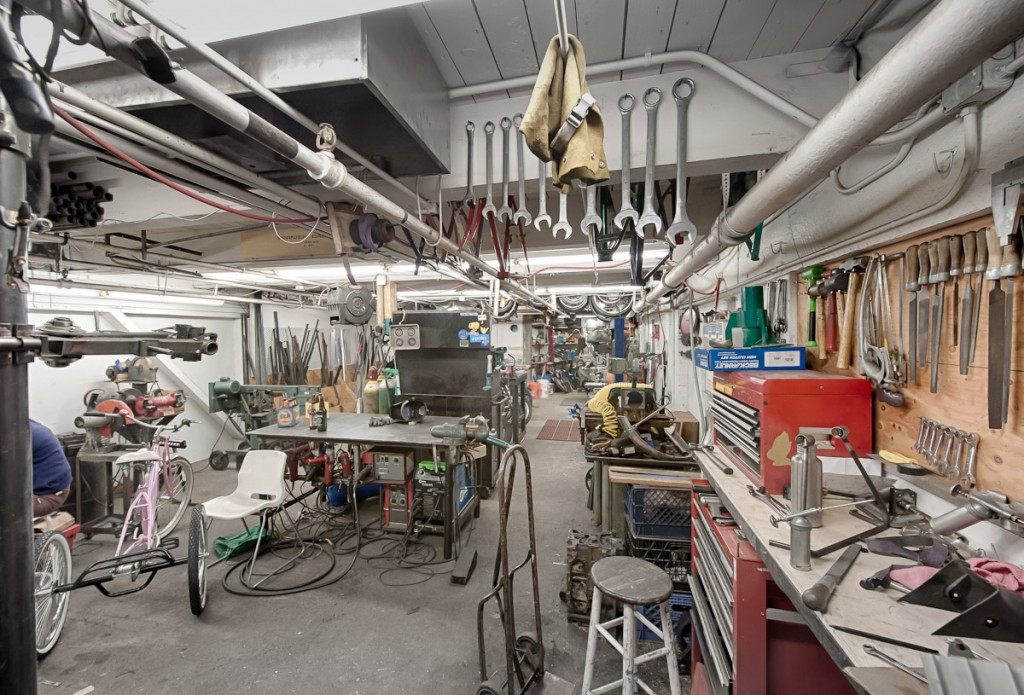
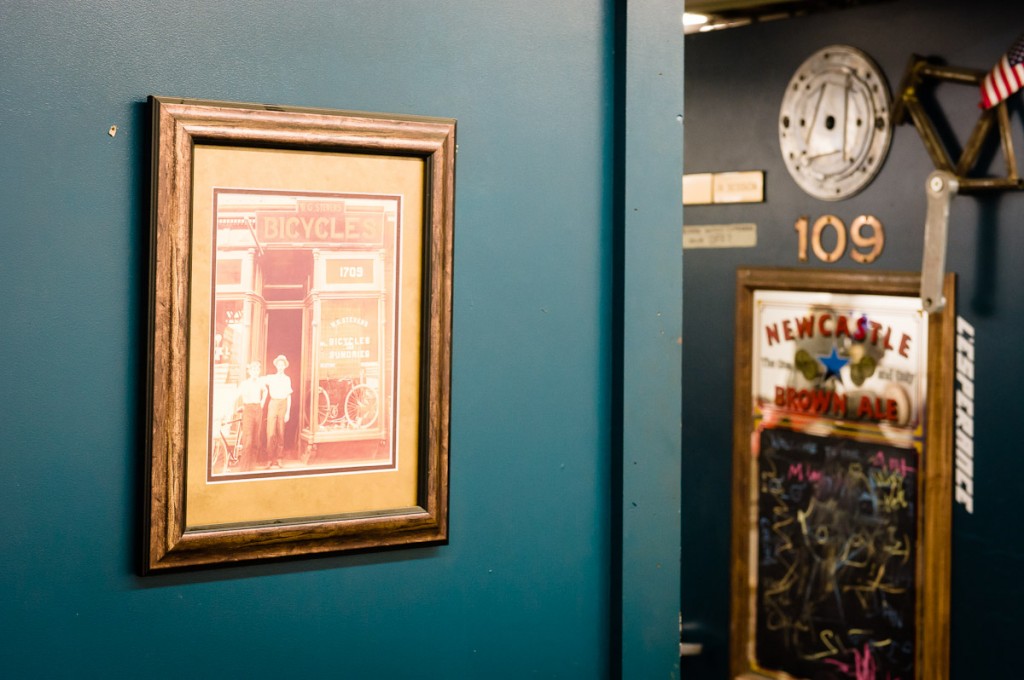
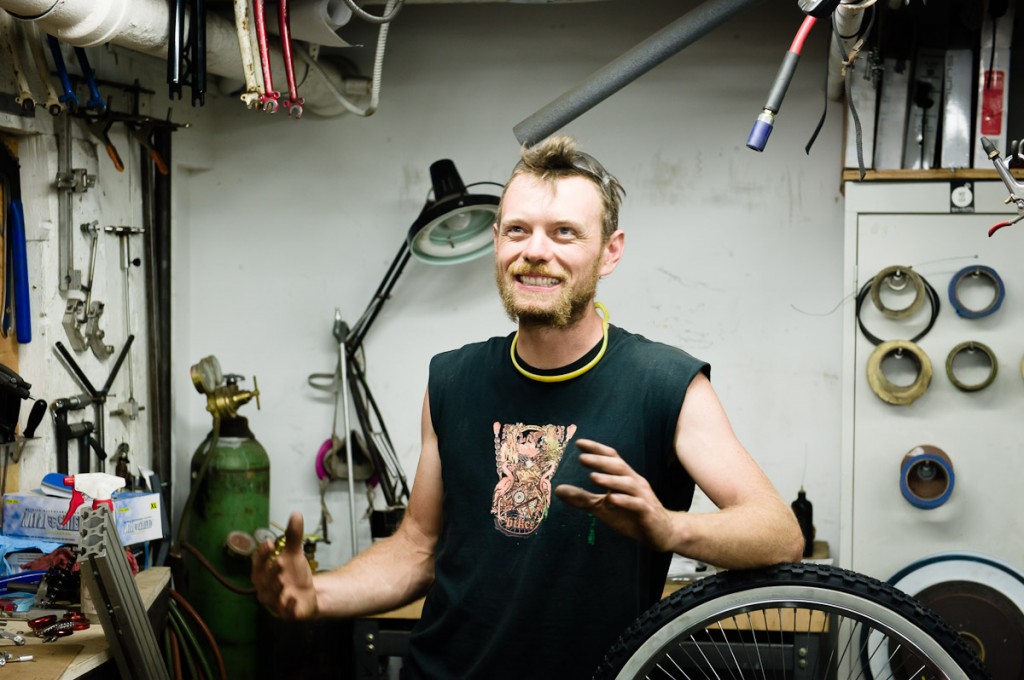
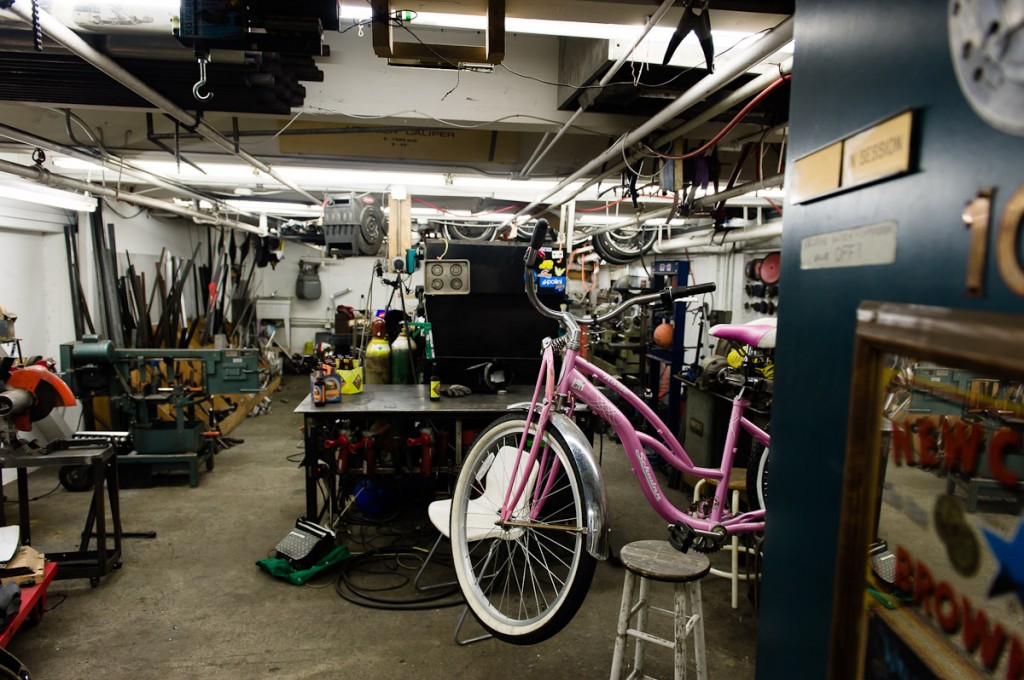
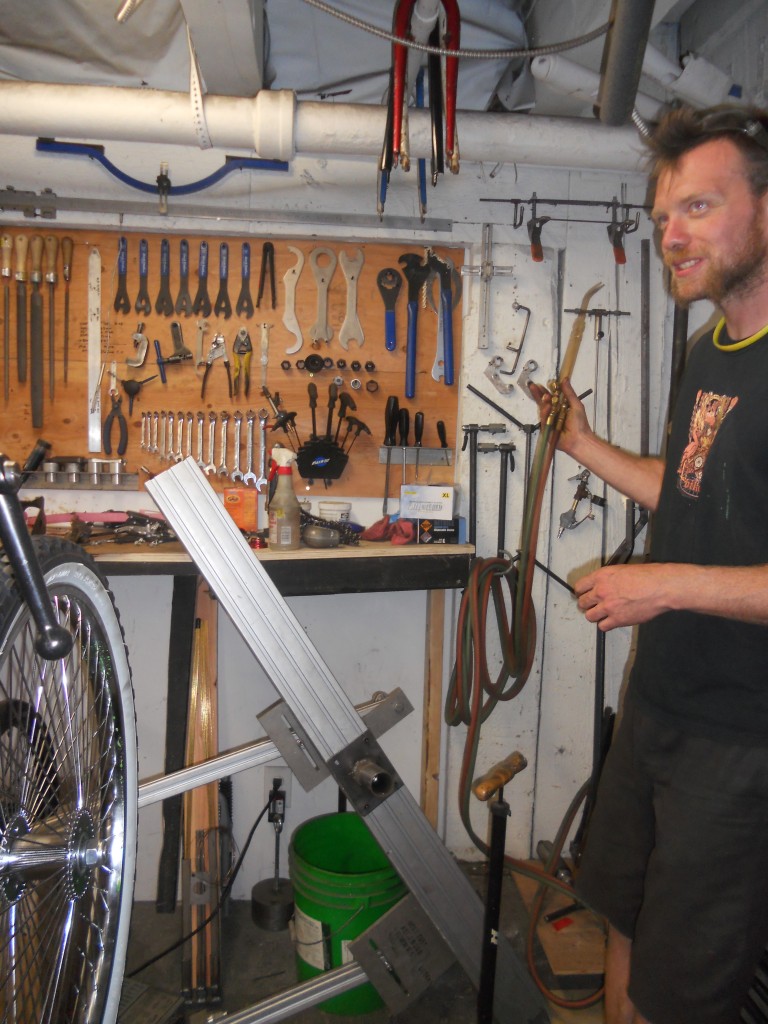
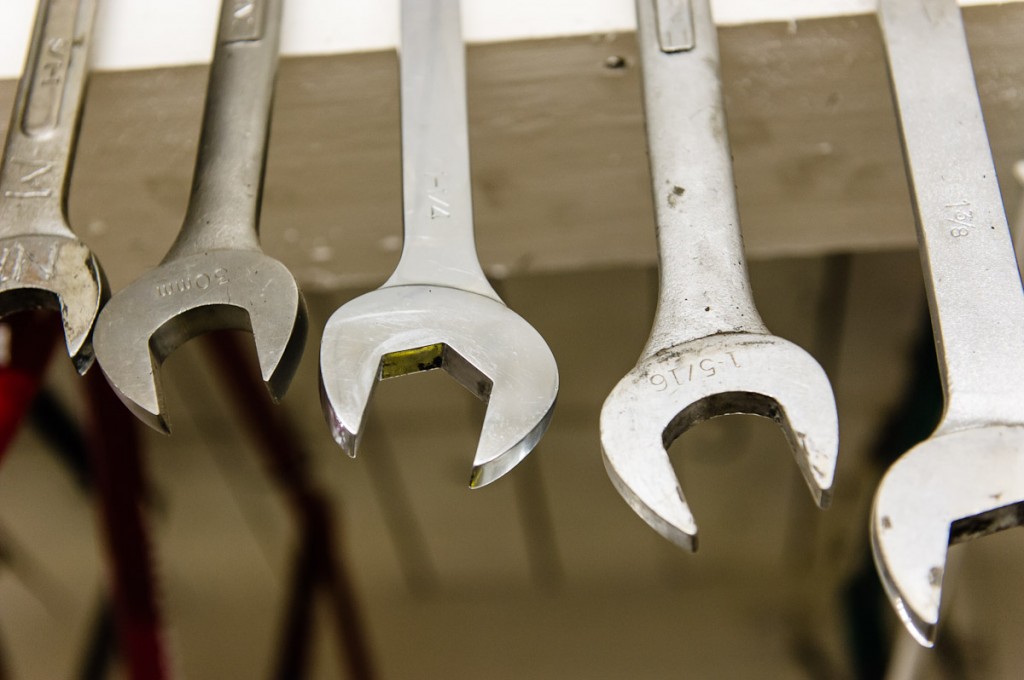
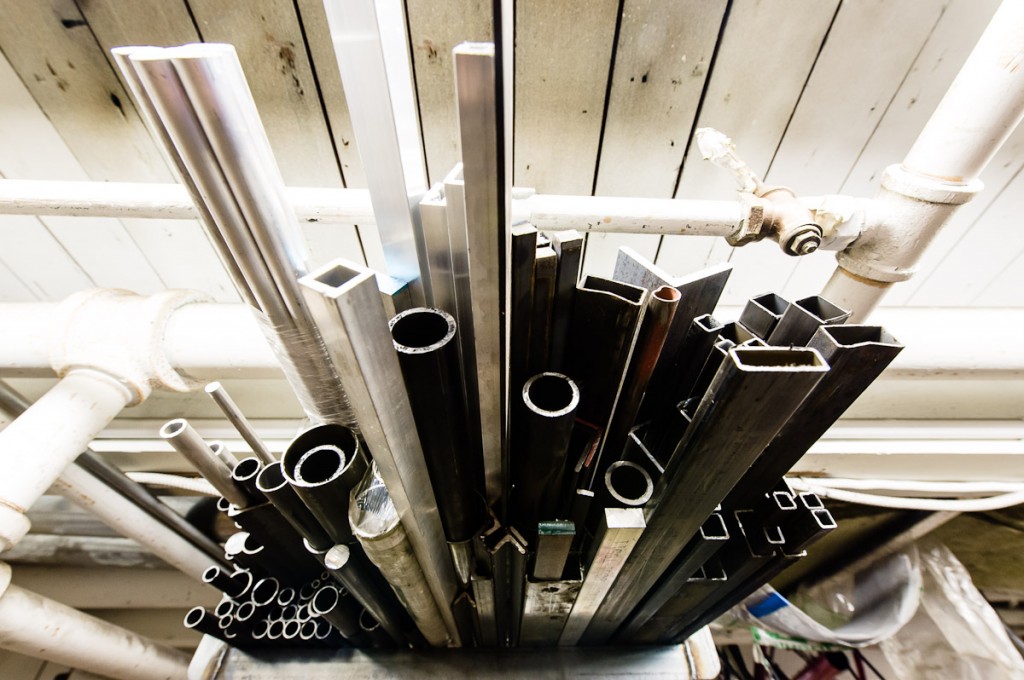
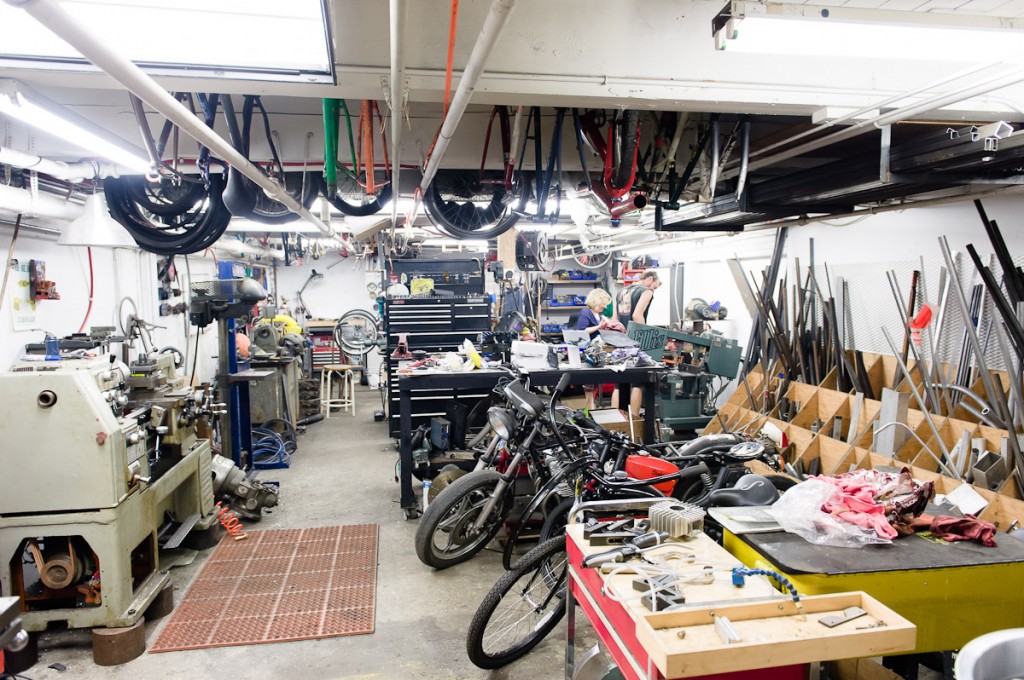
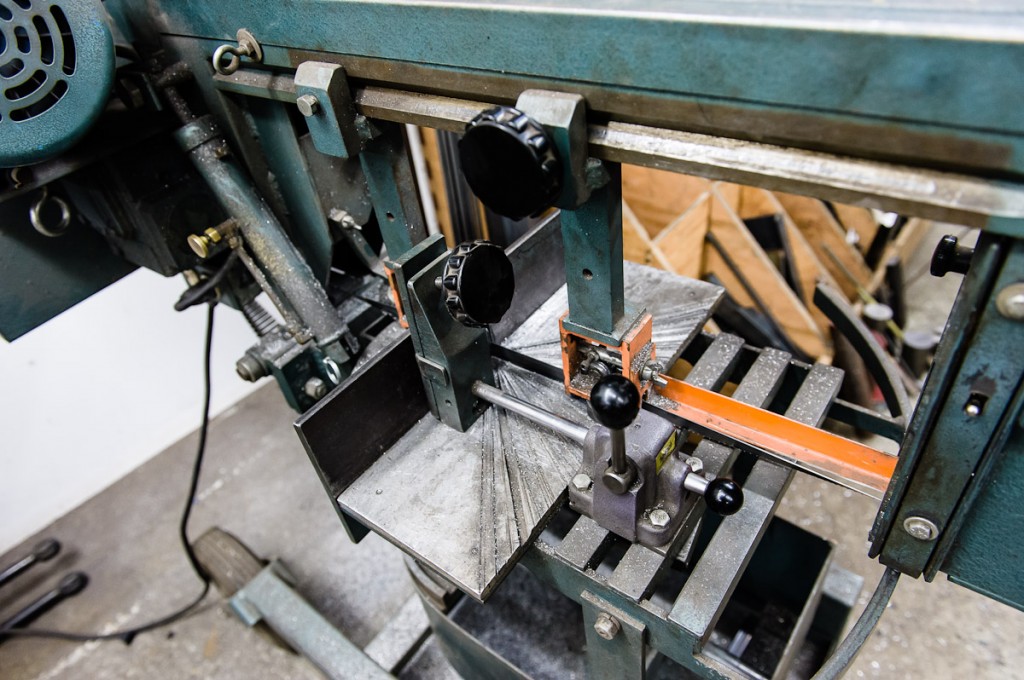
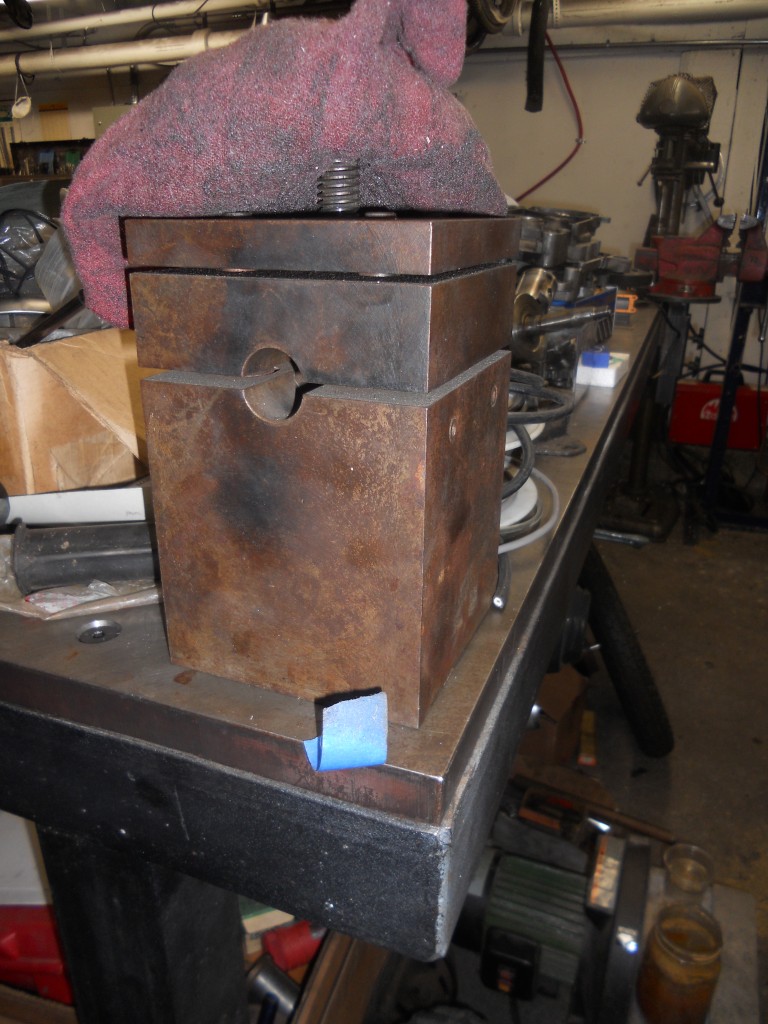
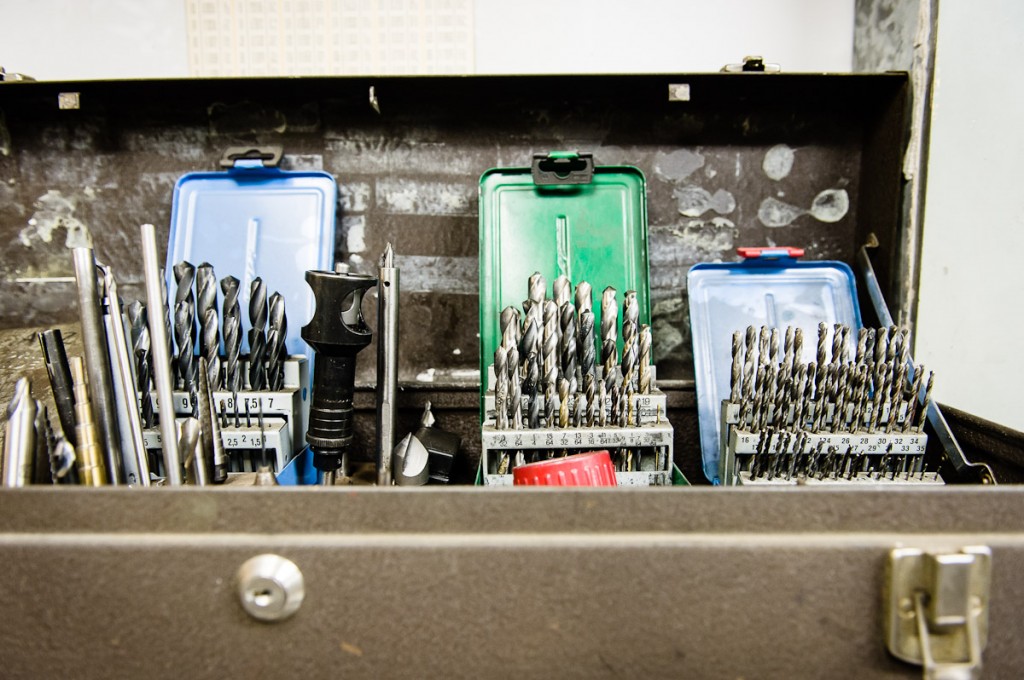
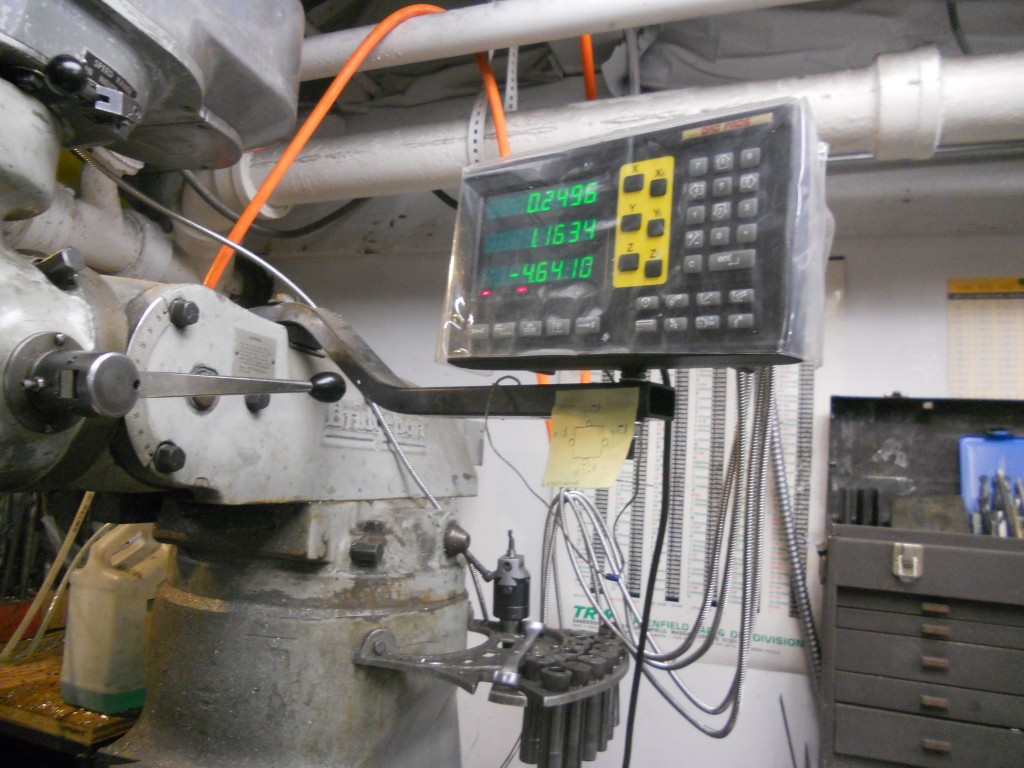
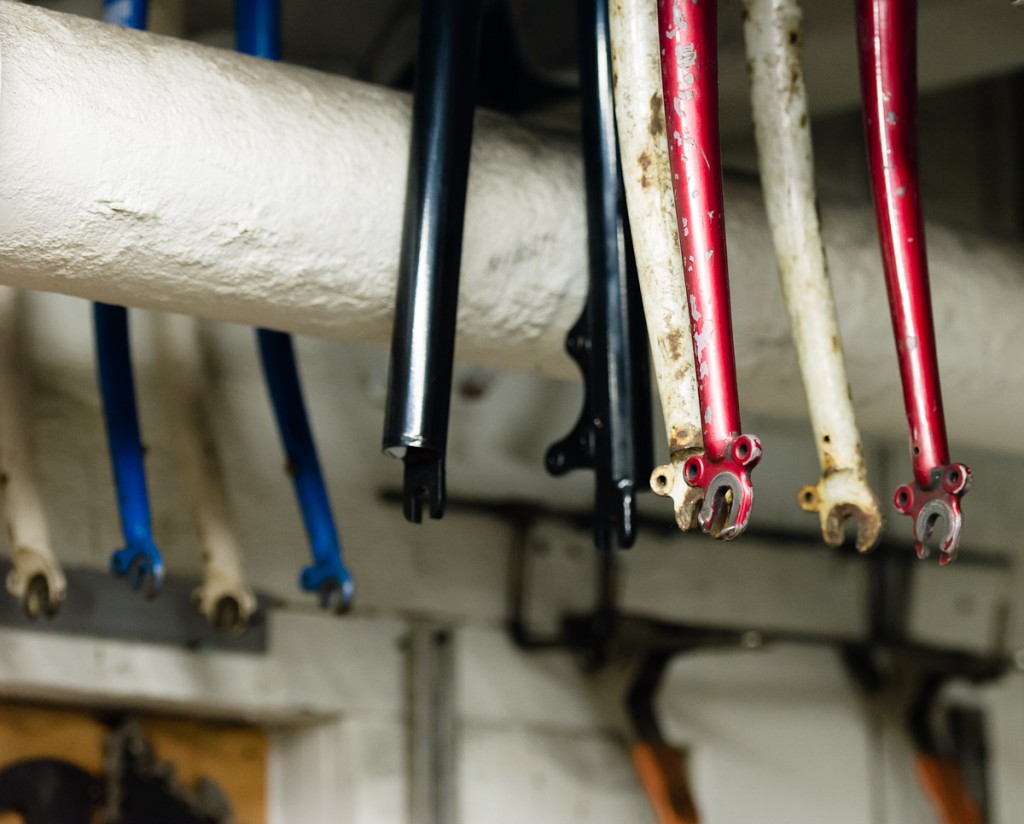
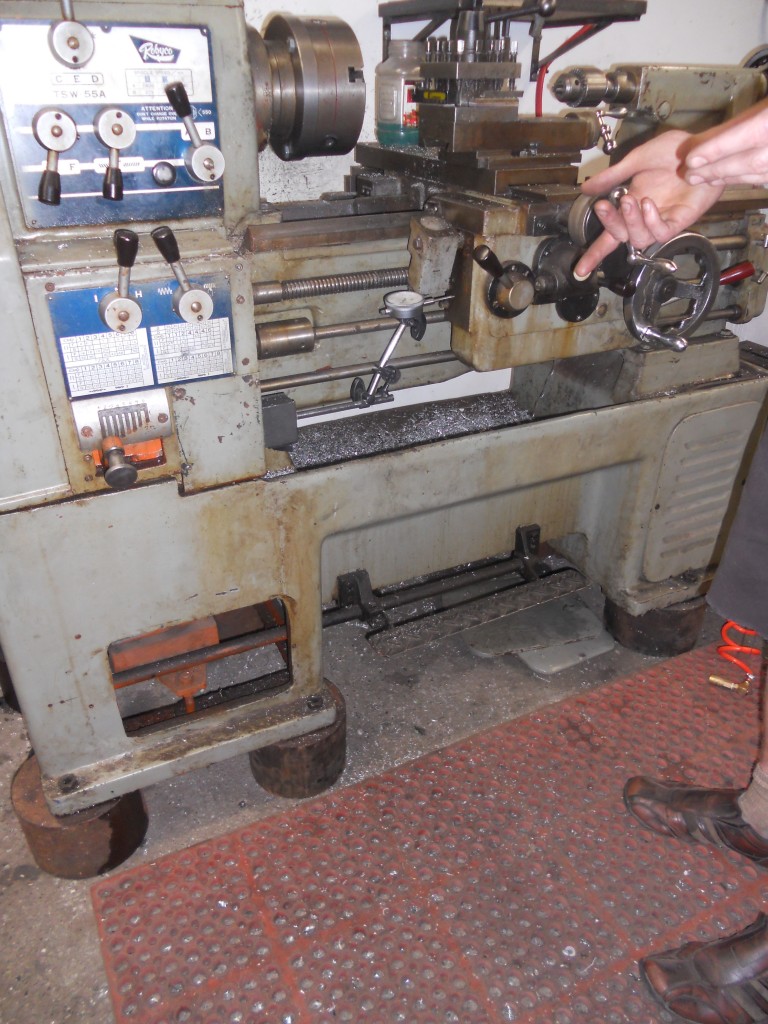
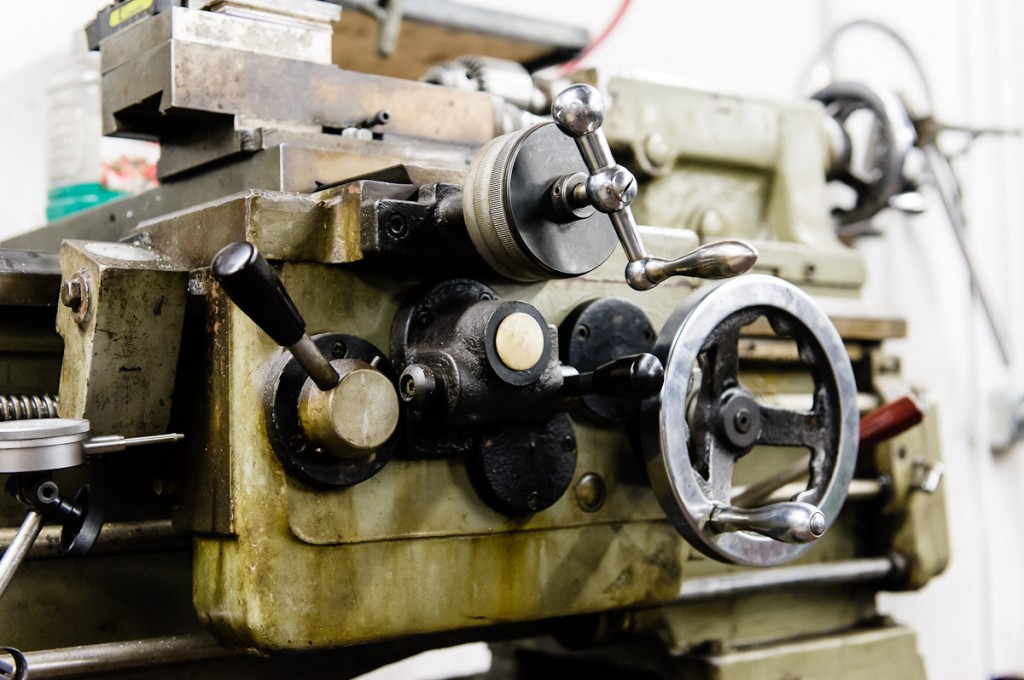
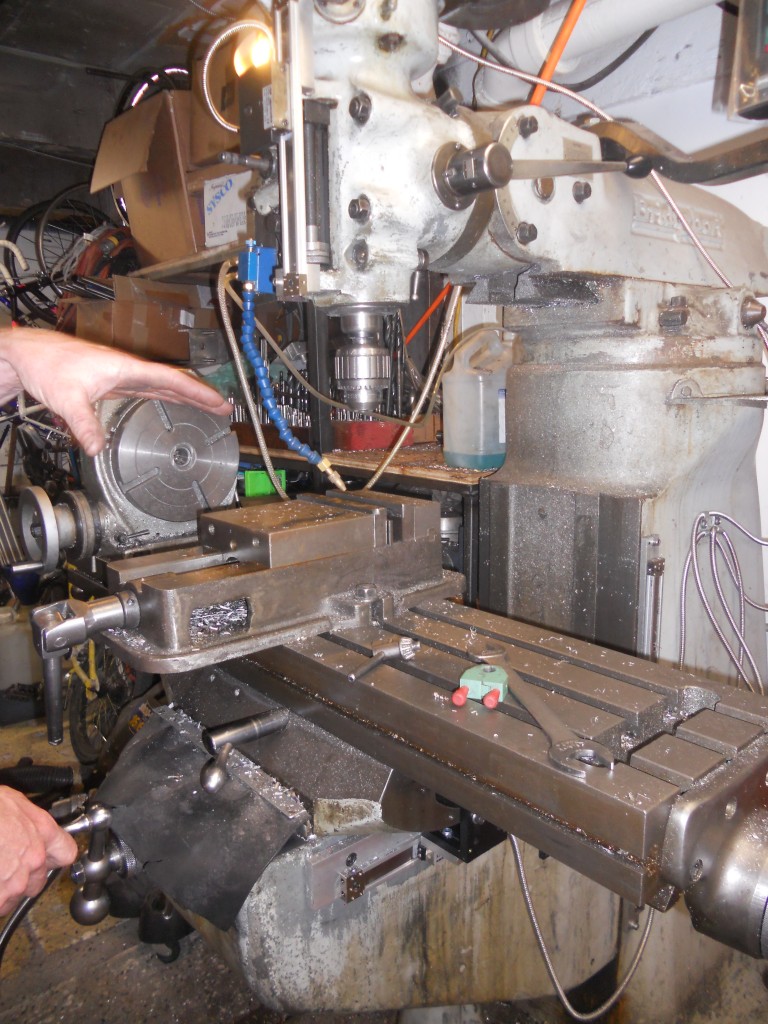
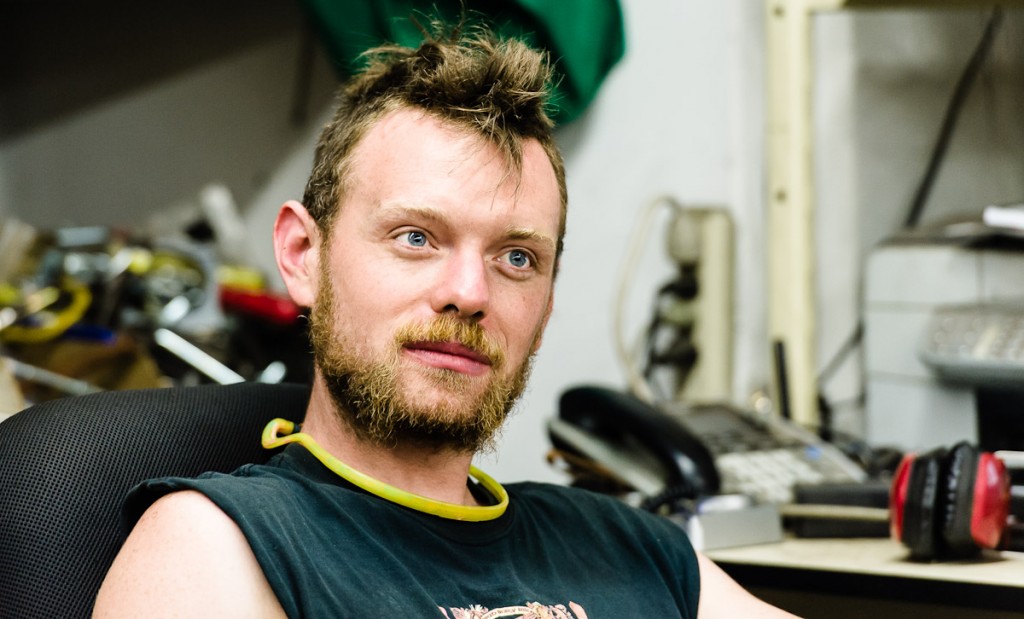
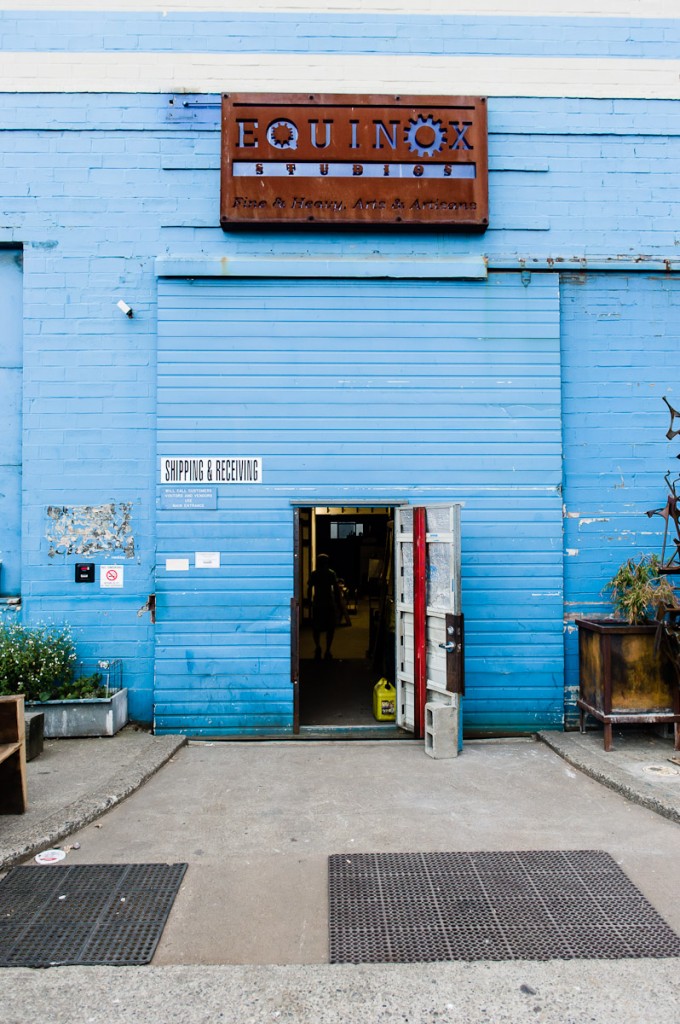
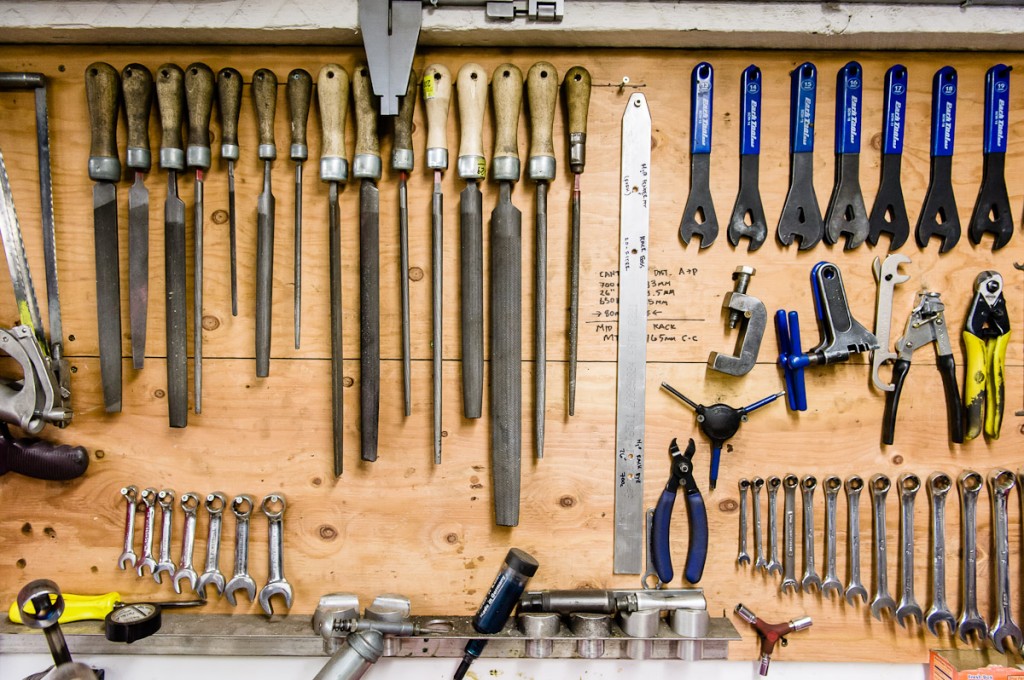
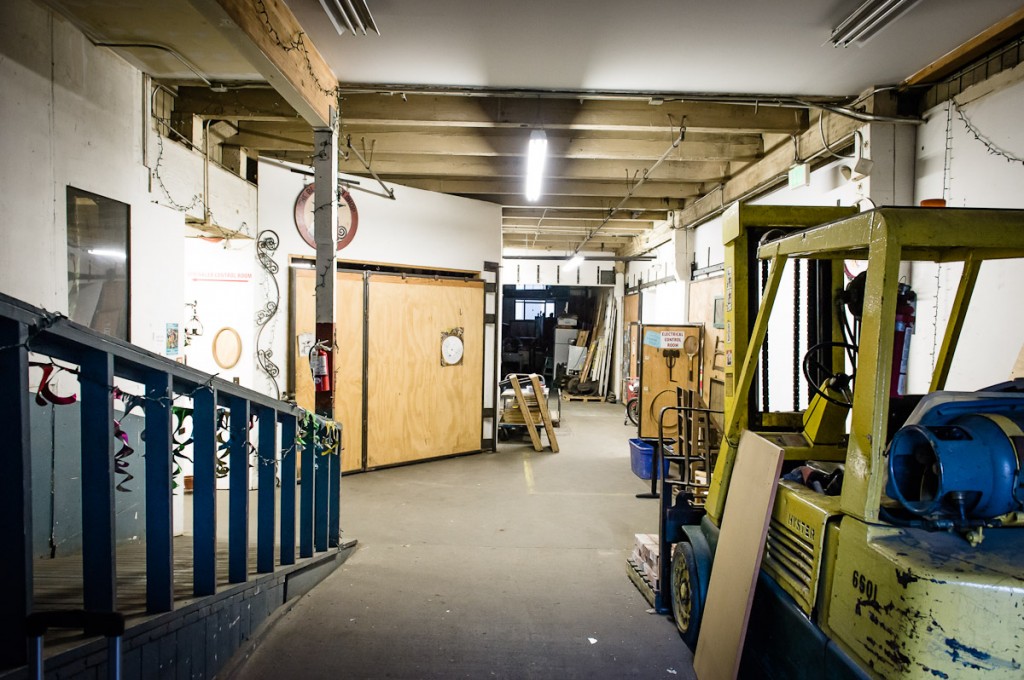
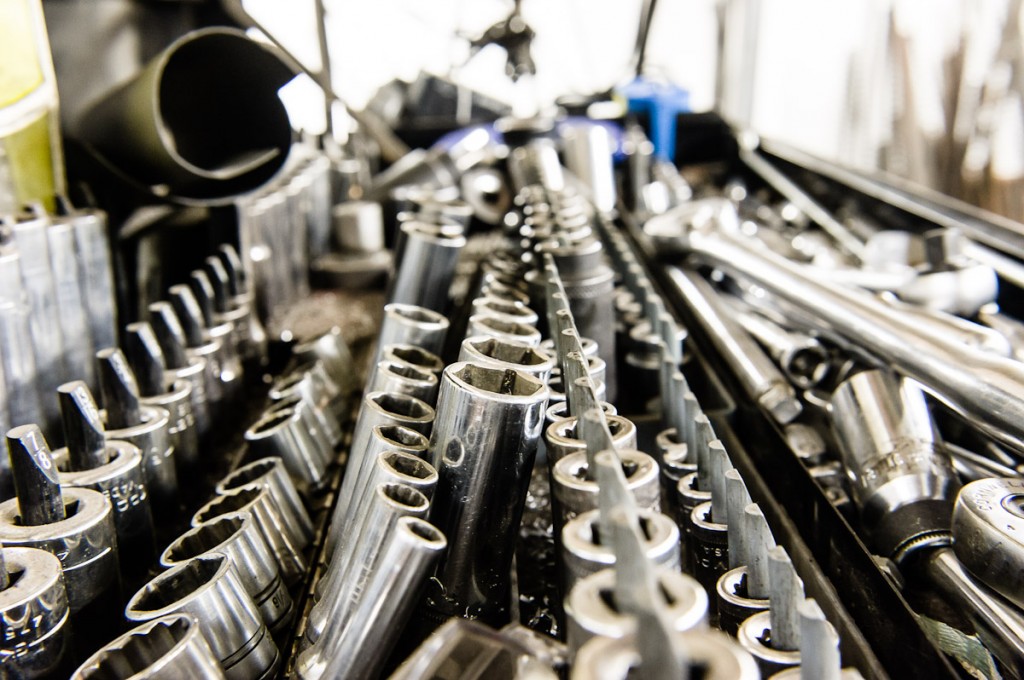
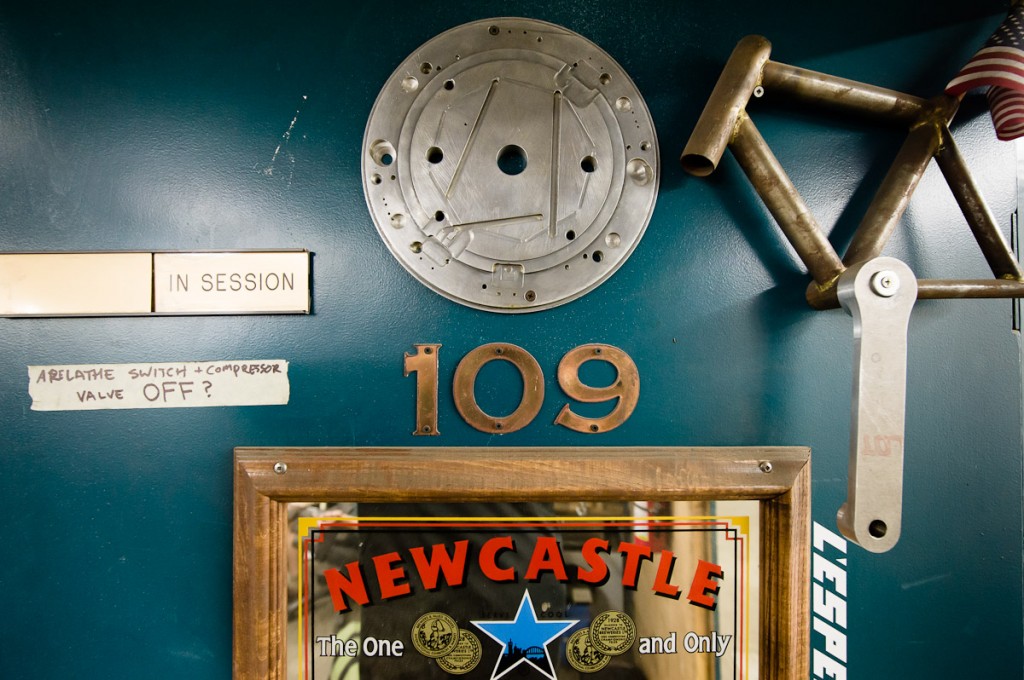
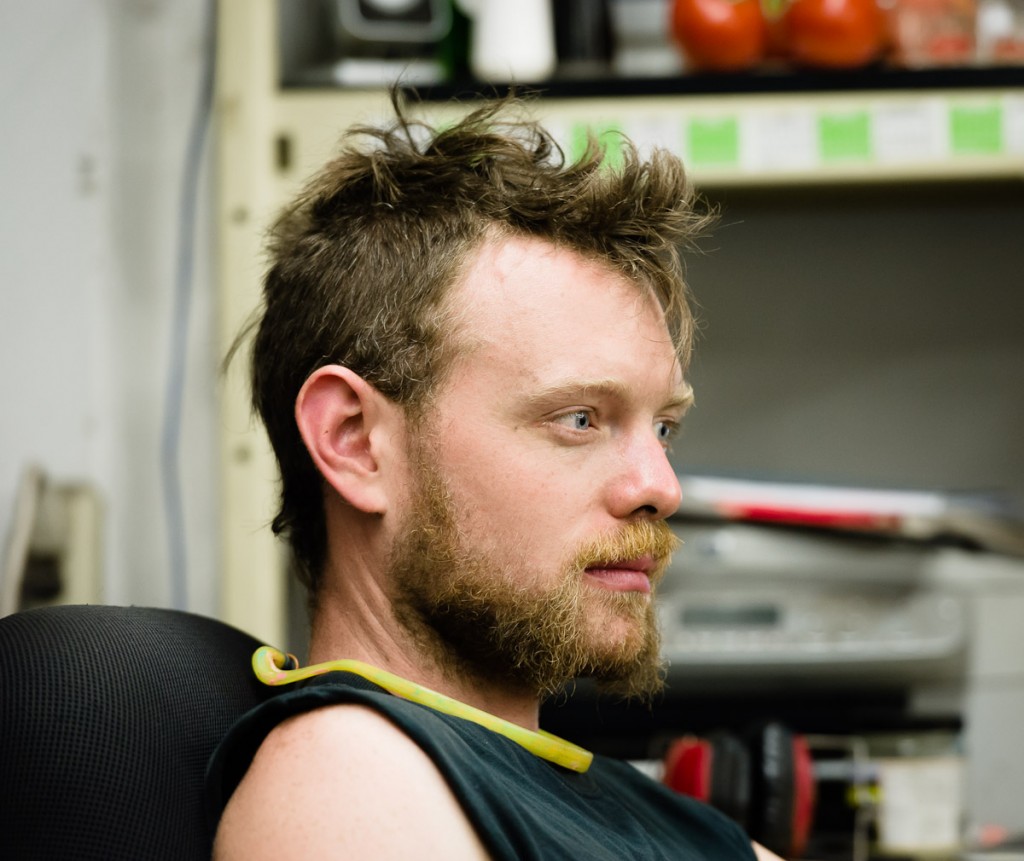
6 responses to “Built to Last”
[…] were recently story wrangling at Haulin’ Colin’s here in Seattle. Read his story here. The following text is from the post-interview hang out/beer drinking/storytelling session. As […]
[…] read more, please check out the full post from Different Office. Filed Under: different office, interviews← Hello […]
[…] (aka, a Shrinkonian flag) for when I’m with someone of my culture. When I’m with Bas, or Haulin Colin, or Martina of Swift Industries, or Del Webber, or Bernie, or Natalie, or Lisa, and so many others, […]
google…
Google http://www.google.com…
[…] Niki: Yeah, I think you should interview each person here, and each floor of the building. [We laugh together.] But it’s not just about this building, this is just the hub I know the best. The other thing is, I think you’ve already hit several that I’d recommend, which is Martina, Haulin’ Colin. […]
[…] Fisher: The Jackson Commons people. Knox Gardiner, and this other guy, who lives down in Coleman. He’s starting a big new effort called Jackson Commons. He’s awesome. He’s a UX/UI designer, just freelances. But he’s been doing a lot of tactical things along Jackson to make it a more livable street. He’s got one of Colin’s trailers. […]